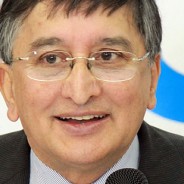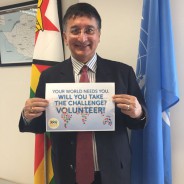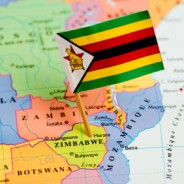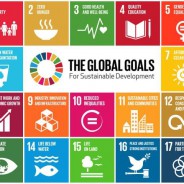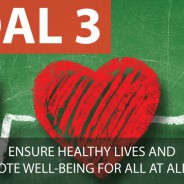Posted by pretty on 11:56 am in Sustainable Development Goals | Comments Off on Partnerships, community engagement spur the realisation of SDGs
http://tizim.org/?p=459
By Byron Mutingwende
The government involvement and commitment to the United Nations systems coupled with the support of the development partners, civil society organisations, national associations, the media and community leaders and members will lead to the realisation of the Sustainable Development Goals (SDGs).
In his statement on the occasion of the 71st Anniversary of the United Nations at the World Health Organisation (WHO) office grounds on Monday 24 October 2016, Bishow Parajuli the UN Resident Coordinator to Zimbabwe paid tribute to the multi-sectoral engagement in making the attainment of SDGs a reality.
“Today, on our special day, we take stock of our year-long engagement in the development and humanitarian spheres in Zimbabwe. It is a culmination of a series of advocacy activities that has run throughout 2016: ranging from awareness raising around the core values and principles of the UN Charter, to building a national coalition for the implementation of the Agenda 2030 for sustainable development and its 17 goals,” Parajuli said.
In the same vein, during the course of 2016, a broad-based national coalition of SDGs was established. The Parliamentarians have taken the lead in legislating for SDGs friendly laws; and local government (provincial and district level) have committed to actively participate in the implementation of SDGs programmes on the ground.
Young people in schools, in universities and in their associations have been playing their role in SDGs advocacy online and off-line, whilst on the other hand traditional leaders have started mobilising communities into action.
The media has for long been on board setting the agenda of public discourse for a meaningful and objective dialogue on SDGs.
“This broad-based multi-stakeholder partnership on SDGs has been made possible under the overall leadership of the Office of the President and Cabinet with technical guidance from the Ministry of Economic planning and Investment Promotion,” Parajuli said.
The United Nations has been at the forefront in fostering partnerships that will continue to mobilise support, together with development partners and the rest of the international community.
He reiterated the need to increase the momentum on the commitment that “no one is left behind” in the quest to end poverty, hunger and protect the planet, as well as fulfilling the aspirations of SDG16 – ensuring peace, justice and strong institutions for all.
In pursuit of strengthening the institutions of democratic governance in line with the SDG16, Transparency International Zimbabwe (TIZ) signed a Memorandum of Understanding with the Parliament to promote constitutional and reform processes.
“TIZ would organize and co-ordinate mutually agreed activities that include capacity building, training and consultative meetings for the Parliamentary Committees and other staff of Parliament,” said Mary-Jane Ncube, the TIZ Executive Director.
She said there was also need to strengthen the capacity of Members of Parliament to enable them to mainstream issues of transparency and accountability and enhance their capacity to counter corruption through the tracking of and monitoring the use of public resources by all institutions of the state.
Still on the goal of leaving no one behind, TIZ has the Community Mobilisation and Advocacy (CMA) unit, which facilitates communities to drive initiatives to fight against corruption. CMA aims at providing tools and approaches or knowledge to ordinary citizens to stand up for a corruption-free Zimbabwe.
The unit also aims to ensure the maximum participation and involvement of citizens in the fight against corruption by organizing communities and providing them the requisite support for impact.
TIZ also runs the Advocacy and Legal Advice Centre (ALAC) – a new anti-corruption initiative providing free legal aid services to victims and witnesses of corruption and seeks to empower male and female citizens to demand accountability and transparency. It is a community service centre that offers both pragmatic services to individuals, communities, companies and institutions who are victims of corruption or witnesses to corruption by giving legal aid and advice. The advocacy aspect of the centre focuses on public education and prevention strategies based on cases and complaints lodged and collated by the centre on a quarterly basis.
Speaking at the UN commemorative event, Kudzai Kwangwari, the Programme Manager of Zimbabwe Association of Community Radio Stations (ZACRAS) said the pursuance of SDGs can only be effective if the communities (including grassroots) are involved and have a buy-in to the 2030 Agenda.
“These people can only be involved if there are locally available platforms of communication like community radios. That’s communication for development. The SDGs can be simplified and communicated in local languages in a manner that makes sense to these communities. Community radio is in our view a tool to demystify development and make sense to the local communities,” Kwangwari said.
He added that brilliant development strategies and blueprints have not been successful because they did not get down to every household. In the same vein, TIZ has made use of community radio stations in Bulawayo and Mutare to reach out to remote communities.
In other countries, particularly in South America and parts of Asia, community radios have played a very critical role in clarifying the development agenda thereby motivating locals to take ownership and actively participate.
In Africa, community radio has been used to cultivate traditionally marginalized communities to participate in community life. These groups include the women, youth, children, the elderly and people with disabilities.
It has emerged that other types of broadcasting are vulnerable to manipulation of power and profit while community radios remain grounded in trying to achieve progress.
Posted by pretty on 9:16 am in News, Sustainable Development Goals | Comments Off on Songbird pens song about SDGs
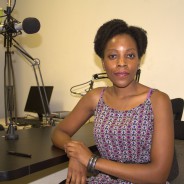
The adage that Music has the power to heal fits well into the life of Camella Muguse, a young and talented songbird whose real life experiences Inspired her to pen a song about Sustainable Development Goals (SDGs).
The 29 year old Muguse who hails from the dusty high density suburb of Kuwadzana, looks up to her heart rendering past to conquer all obstacles that have come her way.
In an effort to raise awareness on the need for a collective effort to collaborate in attaining the aims of the SDGs, the, melodious Muguse penned a song calling on everyone to play their part in making the goals a reality.
The song called titled “we are a family” speaks volumes of how people ought to pull together and make the United Nations SDGs a reality.
She alluded that Gender Equality is the main thrust upon which the song was built. Muguse said she is much concerned about the empowerment of the girl child which she says has compelled her to come up with a charity organization, ‘Shepherd’s Tent”.
Shepard’s Tent focuses on giving young orphaned girls a chance to further their education.
Camella says the fact that one is an orphan should not deter their hopes of furthering education, but should be a new chapter where they appreciate life as it is and dust themselves from such set-backs.
At Shepherd’s Tent, a place where they get nurtured into young, God fearing women,
Camella has managed to come up with a manageable number of girls whom she helps with life skills .
“I’m passionate about the girl child because I lost my parents at a tender age. It is during that time that I realized being an orphan is not the end of the world, but the beginning of new life which needs proper nurturing.
“The love and care that I received after losing my mother, taught me a great deal about love and showing compassion to one another especially the girl child.
“I want to make a difference in my community through empowering these young ladies. It is against this background that I collaborated with Blessing Semba to come up with a song that in a way empowers and speaks for the Girl child but it also focuses on the United Nations SDGs which I’m pretty sure if we all work together, we can attain and change the world.
“I urge all of us to put our hands together and make sure the rights of the girl child are observed and make sure that the SDGs are a reality,”
Posted by pretty on 3:35 pm in News, Sustainable Development Goals | Comments Off on Achieving SDGs Requires Strong, Rational Implementation
OPINION By Bishow Parajuli
UN country co-ordinator
On October 24, we celebrated the 71st anniversary of the United Nations together with over 300 partners including Government ministers, UN heads of agencies, ambassadors, heads of NGOs, the media, civil society organisations, traditional leaders, representatives of private sector and young people in a truly global spirit.
The day allowed taking stock of our year-long engagement in the development and humanitarian spheres in Zimbabwe. During the course of 2016, a broad-based national coalition for Sustainable Development Goals (SDGs) was established.
Parliamentarians have taken the lead in legislating for SDGs friendly laws, and Local Government (Provincial and District Level) have committed to actively participate in the implementation of SDGs programmes on the ground.
Young people in schools, universities, and in their associations have been playing their role in SDGs advocacy online and offline, whilst on the other hand traditional leaders have started mobilising communities into action. The media has long been on board setting the agenda of public discourse for a meaningful and objective dialogue on SDGs.
Going forward, we need to increase the momentum on our commitment that “no one is left behind” in the quest to end poverty, hunger and protect the planet, as well as fulfilling the aspirations of SDG 16 — ensuring peace, justice and strong institutions for all. For all this implementation will be key.
Such commitment to action on SDGs was recently reiterated by President Mugabe at the UN General Assembly, where he emphasised that there should be no half measures and no compromises in achieving all the 17 Goals.
In line with this commitment, in the first year of the 2016-2020 Zimbabwe UN Development Assistance Framework (ZUNDAF) implementation, the UN has been on target in development programme support, except some areas such as poverty reduction that require additional resources.
I am glad to note that emphasis has been put in this area and the Government has recently launched its Interim Poverty Reduction Strategy for the period of 2016-2018 that will guide national efforts to reduce poverty.
The ZUNDAF prioritises the UN’s support in areas of food and nutrition security, gender equality, HIV and AIDS, poverty reduction and value addition, public administration and governance, and social services and protection.
For example, in partnership with the development partners and the Global Funds, the programme on HIV and AIDS is currently providing treatment to 915 000 Zimbabweans, resulting in steady reduction of prevalence rate. The programme on reproductive, maternal, neonatal, child and adolescent health helped Zimbabwe to reduce the maternal mortality by 50 percent in the last 5 years.
The UN continues to support the advancement of human rights and rule of law, including through the Universal Periodic Review process and capacitating independent national bodies, such as the Human Rights Commission, Gender Commission, National healing, Peace and Reconciliation Commission, and the Zimbabwe Electoral Commission.
The UN is committed to do more in supporting and strengthening these independent national watchdogs and various other development, human rights and democratic institutions
In our collective response to the prevailing drought situation, under the leadership of the Government, the UN and NGOs, together with donors such as the USA, UK, China, EU, Netherlands, Japan — to name but a few — have demonstrated strong solidarity in alleviating the threat of hunger.
Of the total $352 million appeal made for the period April 2016 to March 2017, with generous support from donors to the tune of $206 million, the UN and NGOs have reached 1.5 million people who are most in need.
The response is expected to reach 3.1 million people at the peak of the lean season. Our assistance is targeted to the most vulnerable communities in line with the universal humanitarian principles of humanity, neutrality, independence and impartiality.
The world over, including in Zimbabwe, the lines between humanitarian and development needs are becoming increasingly blurred by the effects of climate change.
In order to counter and mitigate the high incidences of recurrent drought in Zimbabwe, we need to invest in tackling its root causes through agricultural reform, irrigation, water harvesting and management for longer term impact.
Over the years it has been demonstrated that traditional development cooperation is not enough to achieve sustainable development. In this regard, a three points can be emphasised that could further accelerate transformation and sustainable development:
First, continued effort to promote reform and establish right policy environment premised on rule of law and respect for human rights — rem
Posted by pretty on 10:14 am in Sustainable Development Goals | Comments Off on Localising the ‘leave no one behind’ promise in Zimbabwe
This post is written by Peter Bare, Sightsavers’ Programme Manager in Zimbabwe.
In September 2015 at the 70th General Assembly of the United Nations, the world finally agreed on 17 goals that would propel the world to the next level. But the next 15 years will have to be filled with more than rhetoric.
To African countries, the Sustainable Development Goals (SDGs) 2015-2030 present an opportunity to continue with the unfinished business left by their predecessor, the Millennium Development Goals. And the year 2030 for Zimbabwe (and potentially the rest of Africa) will be a great year – if we do not wait to track our progress, but seize the moment and lay a strong foundation now.
Zimbabwe conducted a very encouraging multi-stakeholder meeting soon after September 2015, where the local United Nations SDG taskforce met MPs, civil society organisations and the private sector to discuss ways of localising the SDGs. The meeting also highlighted the need to ensure that bills passing through parliament conform to and address the 17 SDGs.
Parliamentarians were urged to raise awareness in their own constituencies, and the Minister of Economic Development discussed aligning the SDGs to the Zimbabwe Agenda for Sustainable Socio-Economic Transformation (ZIMASSET).
Unfortunately ZIMASSET, while a comprehensive, well-articulated plan, is weak on monitoring and evaluation. It lacks a framework for tracking progress and there is no budget allocation for its implementation. There’s a lot of work to be done if we are to ‘leave no one behind’ and meet the 17 goals (with their combined 169 targets) that achievement will be measured against.
A strong political will at the highest level is needed. Political parties and the government have to walk the talk; the same zeal that leaders brought back from New York has to cascade down to the lowest level of leadership in Africa. The political manifesto has to align with the 17 pointers of Agenda 2030. It is this SDG alignment with the National Development Plan that will put Zimbabwe on course to meet the goals.
On 19 July 2016, barely seven months after the SDGs launched, UN Secretary General Ban Ki-moon released the first report on them. This highlighted the importance of baseline data. For Zimbabwe in particular to know where it is now, we need this data – it will show us who we are ‘leaving behind’. We need to make this baseline data available as early as possible.
Lamentably, most African countries failed to achieve the MDGs, simply because they lacked policy and institutional coherence in their implementation – we cannot let this be the case for Zimbabwe and the rest of Africa during the next 15 years. There must be serious reflection on the institutional structure that was present during the MDGs to evaluate strengths and weaknesses – this will help make sure that structures and policies are put in place for the SDGs that consistently maintain economic growth, promote good governance and uphold the rights of citizens
Posted by pretty on 9:22 am in Sustainable Development Goals | Comments Off on 24 Governments Volunteer for 2017 SDG Reviews
STORY HIGHLIGHTS
IISDIn advance of the 2017 session of the UN High-level Political Forum on Sustainable Development (HLPF), 24 Member States have announced their interest in presenting voluntary national reviews regarding implementation of the 2030 Agenda for Sustainable Development and the Sustainable Development GoaSDGs).
The HLPF will consider the theme of ‘Eradicating poverty and promoting prosperity in a changing IISDworld.’
16 October 2016: In advance of the 2017 session of the UN High-level Political Forum on Sustainable Development (HLPF), 24 Member States have announced their interest in presenting voluntary national reviews regarding implementation of the 2030 Agenda for Sustainable Development and the Sustainable Development Goals (SDGs).
The countries who have volunteered to date are: from the African Group: Ethiopia, Jordan, and Kenya; from the Asia-Pacific Group: Cyprus, Iran, Japan, Malaysia and Maldives; from the Latin American and Caribbean Group, Argentina, Chile, Costa Rica, Guatemala, Panama, Peru, Uruguay; from Eastern Europe, Czech Republic and Slovenia; and from the Western European and Others Group, Belgium, Denmark, Italy, Luxembourg, Monaco, Netherlands, and Sweden.
The HLPF will convene under the auspices of the UN Economic and Social Council (ECOSOC) from 10-19 July 2017, in New York, US, on the theme of ‘Eradicating poverty and promoting prosperity in a changing world,’ as agreed in the UN General Assembly (UNGA) resolution on follow-up and review to the 2030 Agenda, adopted in July 2016. It will include a three-day ministerial meeting, on 17-19 July.
By that resolution, the Assembly also agreed that the 2017 session of the HLPF will include an in-depth review of several specific SDGs each year. In 2017, those Goals will be: SDG 1 (End poverty in all its forms everywhere); SDG 2 (End hunger, achieve food security and improved nutrition and promote sustainable agriculture); SDG 3 (Ensure healthy lives and promote well-being for all at all ages); SDG 5 (Achieve gender equality and empower all women and girls); SDG 9 (Build resilient infrastructure, promote inclusive and sustainable industrialization and foster innovation); SDG 14 (Conserve and sustainably use the oceans, seas and marine resources for sustainable development); and SDG 17 (Strengthen the means of implementation and revitalize the Global Partnership for Sustainable Development), which will be reviewed each year.
The ECOSOC President set a deadline of 16 October 2016 for states to indicate their interest. [HLPF Website] [IISD RS Sources]
Posted by pretty on 11:24 am in News, Sustainable Development Goals | Comments Off on Poverty stalks adolescent mothers
Mutoko — Precious Gwaze (16) joyfully breastfeeds her nine-month-old baby boy, whom she named Anotidaishe, meaning God loves us.
By Sofia Mapuranga

In most cases, teenagers underestimate the burden of parenting
The chubby baby briefly stops suckling and chuckles before smiling back at his mother as the two enjoy their mother-child moment.
For a while, Gwaze is oblivious of her surroundings, until she is jolted back to reality by a question on what it is that she regrets the most in her life.
The teenager says if she could turn back the hands of time, she would choose a different path.
“I am still a teenager who still wants to play games with my peers. Sometimes I wish I did not have such a huge responsibility of being a mother,” she said.
“Poverty drove me into this marriage. Now I realise that the minute one becomes a mother, it is a lifetime responsibility which you cannot shift to anyone,” she says.
Blinking back tears, Gwaze says she has seen some of her colleagues making it at school despite their very difficult circumstances.
“It was a very rush decision I made. I should have soldiered on,” she says.
Hailing from Mashonaland East, Gwaze was a Form Two student at Chatiza Secondary School in Mutoko when she eloped to her 20-year-old husband who is a gold-panner.
The first in a family of five, she said her grandmother was finding it difficult to pay for her education and she was forced to stop going to school.
She believes that because she had stopped going to school, her immediate choice became that of getting married because she believed her life would change for the better. However, things turned out differently.
“It is no use crying over spilt milk,” she said, trying to comfort herself.
“My husband’s income is not enough and I have since joined him as a vendor at the gold panning sites,” she said, adding that vending was affecting her physically and emotionally.
“Balancing motherhood and vending is emotionally and physically draining,” she said.
Gwaze is one of the many young girls who were forced into an early marriage by poverty.
Another victim of early child marriages, Emerie Tahubvunga (24) was barely 15 when she got married. she is now a mother of six.
Also coming from Makaha in Mudzi district, Tahubvunga told The Standard that as a young woman, her marriage was not out of choice. She said she was pushed into the marriage by poverty.
“I eloped to become a third wife after my late husband convinced me that he would take care of me and my family.
“The marriage was not rosy because polygamy has its own challenges. My husband died after he had four children with me,” she said, further explaining how she ended up with two more children.
She said: “My late husband’s relatives wanted me to remarry one of my husband’s brothers as a fifth wife and I refused.”
She was then chased from the homestead and her life was never the same.
“I then met my second husband who promised to take care of me and the four children from my previous marriage and I gave him another son before he also told me that he could not cope with the demands of such a big family,” said Tahubvunga.
She said her second husband wanted her to take her children back to their father’s relatives, which forced her to leave him.
Out of desperation, she then married another man who fathered her sixth son in a marriage that hardly lasted a year.
“That was the only time I experienced marital bliss. He was a bus conductor but he died in an accident,” she said.
“I was a child when I married my first husband and looking back, I should have waited,” she said, urging other young girls to value themselves and make the right choices despite their circumstances.
According to the Zimbabwe National Statistical Agency (ZimStat) 2015 Demographic and Health Survey, early child bearing among teenagers is almost three times higher in rural areas compared to urban settings.
Findings by ZimStat revealed that 22% of adolescent females aged 15-19 in Zimbabwe have had children, with one in six teenagers (17%) having given birth and another 5% being pregnant with their first child.
Government is aiming at eradicating extreme poverty by 2030, as stipulated in the Sustainable Development Goals (SDGs).
In its post 2015 SDGs agenda, government said it was aiming at ensuring that it reduced by half the number of people living on less than $1,25 a day.
However, due to the increasing poverty levels in the country, exacerbated by the El Niño-induced drought, it remains to be seen whether this will come to reality.
Poverty Reduction Forum Trust director Judith Kaulem said because poverty bore a female face, it was important to consider targeting women and girls in poverty alleviation interventions.
Real Open Opportunities for Transformation Support (Roots) director, Beatrice Savadye said besides the complications they faced before, during and after delivery, teenage mothers were more likely to drop out of school, a factor which reduced their social, economic and political opportunities.
“Young mothers may not be sufficiently mature for childbearing and rearing,” she said.
“Having children at an early age reduces a woman’s educational and employment opportunities, factors which greatly reduce the prospects of getting jobs on equal footing with their male counterparts.”
The 2015 Zimbabwe Demographic Health Survey (ZDHS) report established that while adolescent fertility rates remained high among rural girls, at 27% against 10% among urban girls, it varied according to wealth, geographic location and education status.
Savadye said it was critical for Zimbabwe to acknowledge the relationship between wealth, poverty and sexual and reproductive health and rights.
“Findings by the ZDHS confirms it. The proportion of teenagers who start childbearing decreases as wealth increases, unlike those from poverty-stricken families. These are the dynamics of poverty,” said Savadye.
Sally Dura, the national coordinator for the Women’s Coalition emphasised the importance of empowering women and girls as a strategy to ending poverty in all its forms.
“Women and girls are an important link in economic prosperity. It is sad to note that the majority of our women and girls still fail to access resources and this marginalises them socially, economically and politically,” said Dura.
Experts who gathered in Harare at the 3rd Capacity Development Forum agreed that there was need for a more coordinated and strategic approach to developing capacity if Africa was to achieve the ambitious goals as defined by the SDGs Agenda 2063.
“To achieve economic, political and social transformation, we will need critical skills and a change of mindsets” said Emmanuel Nnadozie, executive secretary of the Africa Capacity Development Foundation.
Posted by pretty on 9:59 am in Sustainable Development Goals | Comments Off on First year (&first outcomes) of the Sustainable Development Goals
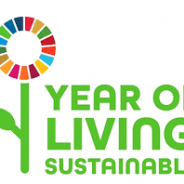
By Paloma Durán, Director of the Sustainable Development Goals Fund (SDGF).
The 2030 Agenda for Sustainable Development is celebrating its first anniversary. Adopted by all Member States during the United Nations General Assembly last year, it includes a set of 17 Sustainable Development Goals (SDGs) broken down into 169 specific targets that address the most urgent challenges for people and the planet in the next 15 years. And this Agenda has another distinctive quality: it not only seeks to eradicate extreme poverty and hunger, ensuring health, education, water and sanitation or economic progress, but also provides a comprehensive, universal approach that balances the three dimensions of sustainable development: economic, social and environmental. Today, one year after their approval and ten months after their entry into force, we take the opportunity to review where we are with the SDGs.
As the first annual progress report of the SDGs indicates, it is clear that although there has been great progress since 2000, some of it has been uneven. Consider the fact that one out of every eight people still live in extreme poverty and almost 800 million people suffer from hunger. In addition, the births of almost one quarter of all children under the age of five have not been recorded, over one billion people are living without electricity, and the lack of clean water affects 700 million people. It is a troubling picture that is further exacerbated by climate change and its potential growing effects in all areas of development. Moreover, the report also reflects that the tremendous economic progress achieved in the previous Millennium Development Goals (MDGs) has not benefited everyone equitably and the ongoing fight against inequality remains one of the great challenges of the 2030 Agenda.
While available data confirms many existing and pending challenges, the 2030 Agenda provides a clear roadmap and many countries are already integrating the Sustainable Development Goals into their national strategies. This is precisely what was envisioned for a universal Agenda: all nations must adapt and apply the SDGs to their national policies and plans, including the richer countries, where key challenges remain in matters such as women empowerment, eliminating discrimination and the aforementioned fight against inequality. At this year’s High Level Political Forum on Sustainable Development, it was encouraging to learn that at least 50 member states have already integrated the SDGs into their national plans and strategies for development.
At least 50 member states have already integrated the SDGs into their national plans and strategies for development
However, governments and international organizations do not hold entire responsibility for the achievement of the SDGs. Other actors such as NGOs, academia, businesses and civil society groups play a key role in the realization of the 2030 Agenda. This is especially true of the private sector, which is an important engine for job creation and economic progress in many regions, as recently stated by David Nabarro, the UN Special Adviser for the Implementation of the 2030 Agenda. The importance of engaging the private sector in sustainable development was also clearly recognized in the Addis Ababa Agreement on Financing for Sustainable Development, which estimated that billions of dollars in financing and investment will be required to make the SDGs a reality. Therefore, the joint collaboration of all stakeholders is not merely rhetoric, but provides a clear imperative for action to achieve the goals. In the coming months we will continue to see new global partnerships for development be implemented and revitalized.
Another key milestone was reached just a few weeks ago, with the formal ratification of the Paris Agreement on Climate Change by China and the United States which, according to official reports, are the world’s largest greenhouse gas emitters. This signifies a major step forward in the fight against climate change, as both countries combined account for 39% of the 55% of emissions required for the agreement to come into effect. Environmental issues remain critical in the 2030 Agenda, and their impact on the rest of the development goals—food security, water and sanitation, health and economic growth—is especially concerning in the most vulnerable regions of the planet, particularly the Small Island Developing States. For example, in Fiji, Samoa and Vanuatu, where the SDG Fund operates, we are focusing on organic farming. One of the main reasons is that, by retaining between 20% and 40% more fertile soil, this form of agriculture builds greater resilience to damages produced by cyclones and leads to less economic losses than other crops.
The SDG Fund contributes to improving the lives of more than one million people in Africa, Latin America, Asia and the Middle East
At the Sustainable Development Goals Fund—the United Nations mechanism established to implement the SDGs—we are eager to take stock of the progress achieved to date. With a number of new joint programs launched this year in the Pacific, as well as Cuba and Nigeria with our Food Africa project, we have increased the number of countries where we implement development projects to 23. We have also contributed to improving the lives of more than one million people in Africa, Latin America, Asia and the Middle East.
Our joint programs work with over 14 specialized UN agencies, as well as national and local partners, and involve key collaboration with both public and private sector actors. In fact, local partners play a central role in the design and implementation of programs and provide over half of the budget in matching funds. These funds serve a two-fold purpose as they double the impact of the joint programs, and work to increase a sense of national ownership and empowerment among our many community partners.
In summary, the results of the SDGs over this first year confirm that the implementation of the 2030 Agenda for Sustainable Development is now an encouraging reality.
Posted by pretty on 9:53 am in Sustainable Development Goals | Comments Off on One year has passed since the passing of SDGs ,What’s happened?
How is the “integrated and indivisible” nature of the Sustainable Development Goals being translated into action by national governments?
Over nearly four years of drafting and negotiation, involving the largest public consultation process ever undertaken, United Nations member states defined and then agreed on “the Future We Want.” The agreement includes 17 Sustainable Development Goals, plus a preamble and a declaration, and is technically titled Transforming Our World: the 2030 Agenda for Sustainable Development. Unanimous accord on the new agenda in September 2015 was a watershed moment: countries, UN agencies, private sector entities and thousands of aligned civil society organizations (including EcoAgriculture Partners) were suddenly in the “implementation phase.” One year later, what progress has been made? Specifically, how is the “integrated and indivisible” nature of the 2030 Agenda being translated into action by national governments?
The world’s first SDG progress reports
In July 2016 the High-Level Political Forum on the 2030 Agenda (HLPF) convened for the first time, bringing government ministers from most of the 193 UN member states together in New York, with thousands of representatives from civil society and the private sector. “The purpose of [the HLPF] is to provide a forum for the exchange of regional, national and even local or subnational experiences in terms of the implementation of the Sustainable Development Goals,” Thomas Forster, Senior Fellow with EcoAgriculture Partners and lecturer on food policy and governance in the Food Studies Program of the New School for Public Engagement said when I spoke with him in August. The centerpiece of the HLPF are Voluntary National Reviews (VNRs), this year prepared by 22 countries, on their progress implementing the SDGs. This first major international knowledge exchange dedicated to SDG implementation revealed two important ways governments are moving the agenda from the page into practice.
Making progress on tracking progress
While the SDGs establish international expectations for sustainability in countries across the wealth spectrum and around the world, the HLPF, and its associated country and thematic reviews, provide a mechanism to hold countries accountable to progress towards those goals. However, without good data (comparable, complete, relevant, indicative), it will be impossible to track progress on the goals, and determine if efforts are effective or not before it is too late to change strategies. So, one major task in front of the world in these first years of the 2030 Agenda is ensuring that national governments are keeping tabs on the right things, and that they have the capacity to do so effectively.
The government of the Philippines, in their voluntary review, focused specifically on how the government is setting up its tracking system for progress on the goals. They note, “The assessment and prioritization of the global SDG indicators based on national context have undergone a participatory and iterative process, jointly led by the national planning and statistics agencies.” That process included two technical meetings with hundreds of participants from government agencies, academia, and civil society in which country-appropriate indicators for each of the 17 SDGs were selected. In Egypt, “a Sustainable Development Unit (SDU) within the National Statistical Agency (CAPMAS) was established to lead the monitoring and evaluation of the implementation of the SDGs.”
For all member states, and the UN system itself, developing monitoring & evaluation systems for the SDGs is still, in Forster’s words, “very much a work in progress.” And that’s a good thing, he said, “because there is a need for creative and manageable approaches to dealing with vast amounts of information and making it useful for decision-makers at all levels.”
Building links between sectors for effective implementation
Another encouraging development to emerge from the 22 voluntary reviews was the prominence of efforts to bridge sectoral divides between agencies and ministries in government for planning and implementation of the 2030 Agenda. For instance, Mexico acknowledged: “One of the most important challenges of Agenda 2030 is establishing precise linkages and coordination mechanisms between the different entities involved in the implementation of public policies that lead to compliance with the SDGs. Therefore, in consideration of the cross and multidimensional nature of the Development Agenda 2030 (social, economic and environmental), we are identifying existing government structures to perform this function.”
Colombia has been a champion of integration at the highest levels of government to achieve sustainable development. Way back in February 2015, 7 months before the goals would be agreed, the president created a High Level Commission for implementation of Agenda 2030 and the SDGs.Germany likewise has a National Sustainable Development Strategy (NSDS) that they are busily transforming into a framework for achieving the SDGs. Implementation of the NSDS is steered by the State Secretaries Committee for Sustainable Development, which includes representatives from each of the federal ministries. China, meanwhile, says it has linked “the 2030 Agenda with domestic mid-and-long term development strategies,” and that “The domestic coordination mechanism for the implementation, comprised of 43 government departments, has been established to guarantee the implementation.” One of Morocco‘s six lines of effort to implement the SDGs is simply called “La maitrise de la coordination des politiques publiques” or “The mastery of policy coordination.”
However, as Forster noted, “the percentage of the goals and targets that have to be achieved at the local, the landscape level, is something like 80 percent of them. So it really is about local implementation. The role of the organizations that help translate between those different levels is key.”
New support for bringing people together
Most of the 22 reporting countries appear to recognize that implementation “is not just a top down process. It is really going in both directions,” as Forster told me. Policy coordination and improved monitoring & evaluation are important preliminary steps on the implementation pathway. The approaches that many of the voluntarily reporting countries are taking to those tasks suggest that the “integrated and indivisible” nature of the 2030 Agenda is receiving far more than lip service.
As Forster says, “The efforts to actually bring disparate parties together in specific landscapes to work in new ways is a long term commitment, but it may have new support in the short term to help build that capacity to get things done, and to do it in this timeframe of the next 15 years.”http://ecoagriculture.org/blog/one-year-in-sdgs-progress/
Posted by pretty on 9:07 am in Sustainable Development Goals | Comments Off on Health experts warn over SDG targets achievement failure
HEALTH experts have warned that Zimbabwe might fail to achieve its health sustainable development goal (SDG) targets as long as funding for the health sector remains below 15% of the national budget.
by VENERANDA LANGA
Itai Rusike, executive director of Community Working Group on Health (CWGH), said there was need to increase the health sector budget next year to deal with the disease burden, access to health facilities by all, address health sector human resource challenges, and deal with the issue of access to medicines by all.
In the 2016 National Budget, Finance minister Patrick Chinamasa allocated only $370,79 million to the Ministry of Health and Child Care, representing 8,3% of the total budget, a far cry from the 15% allocation recommended by the Abuja Declaration on Health.
“Given the current fiscal constraints, government should prioritise and focus on cost-effective health programmes and interventions,” Rusike said.
“Reaching the SDG targets requires a sustained momentum in financing our health care systems, and while progress has been made in improving our health indicators, there is need to sustain the momentum in funding of health care systems.”
Employment costs in the Health ministry were said to be consuming the bulk of its budgetary allocation, leaving little funds for operational costs and capital projects. The result was said to be over-reliance on donors to fund different health programmes such as HIV and Aids, maternal and child health.
“External funding has, somehow, become fungible and has, in most cases, replaced government funding instead of complementing it,” Rusike said.
According to a Unicef 2016 health and child care budget brief, off budget support to the Health ministry by development partners was projected to be approximately $400m, an amount which even exceeded government’s national budget allocation to health.
Most of the donor dependence in the health sector was said to be on medicines.
CWGH expressed disappointment over maladministration at some hospitals, where, in the past, the Auditor-General’s reports indicated expiry of medicines at some health centres, while some hospitals experienced shortages.
“NatPharm should be capacitated so that it can be able to provide regular, affordable and timely supply of essential drugs.”
CWGH also suggested medicinal support should be extended to the elderly and vulnerable groups suffering from chronic illnesses such as diabetes and hypertension as they cannot afford buying medicines that were usually available only at pharmacies.
Posted by pretty on 10:25 am in Sustainable Development Goals | Comments Off on Everyone has right to highest health standards
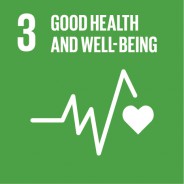

Zimbabwe has begun to put in place strategies for the implementation of the Sustainable Development Goals (SDGs).
By David Okello
THE right to health includes access to timely, acceptable, and affordable health care of appropriate quality. Entitlements to such rights include the right to a system of health protection that gives everyone an equal opportunity to enjoy the highest attainable level of health.
There have been good strides to improve health services delivery, to meet global goals and benchmarks such as the Millennium Development Goals (MGDs) in Zimbabwe.
However, the country still faces a huge burden of diseases – emerging, re-emerging and neglected tropical diseases.
Human resources for health remain the engine of effective and efficient healthcare systems. The country has remarkably stabilised the brain drain phenomenon of the last decade, partly by introducing staff retention allowances and above all, by training more health personnel.
Nearly all the public sector posts, which were established in the early 80s for nurses and midwives, have been filled.
However, it is regrettable that post establishment has not been revised over the years. It means that there is a surplus of nurses who cannot be immediately absorbed when they are released from training institutions. At the moment there is clearly a miss-match between disease burden, staff establishment and unemployed nurses.
Therefore, government should urgently find ways of absorbing surplus staff trained at very high costs. We believe with adequate consultations involving all government ministries and other sectors, the surplus health workforce could be absorbed to serve the needs of the population.
For instance, a well-developed school health programme based in the education sector could be a ready avenue for absorption of some health staff.
One of the legacies of the brain drain syndrome is that new recruits into services would not be able to access mentorship of more experienced hands. Healthcare left in the hands of less experienced staff adds more concerns about the quality of healthcare services. Other human resources for health concern relate to the mal-distribution of specialist services.
The bulk of specialist services are concentrated in the capital city, Harare, where there is a vibrant private healthcare practice. Unfortunately, the cost of care in the private sector remains high, making such services inaccessible to many.
These challenges are further compounded by four major barriers in accessing healthcare: Distance, out of pocket expenditure, harmful traditions and religious beliefs practices.
Government should find ways of taking specialist care to all parts of the country, which, fortunately for Zimbabwe, already has a good network of health facilities.
Today we also face an emerging additional health burden. Instead of diseases vanishing as living conditions improve, socio-economic progress is actually creating unintended conditions that favour the rise of non-communicable diseases.
Economic growth, modernisation, and urbanisation have brought side-effects in the form of unhealthy lifestyles.
Worldwide, non-communicable diseases (NCDs) have overtaken infectious diseases as the leading cause of mortality. This shift challenges traditional development thinking, which has long focused primarily on diagnosing infectious diseases and prioritising maternal and child mortality for international action.
NCDs can no longer be conceptualised as a rich-man’s problem, nor can we continue to think of NCDs as the killers of the old and frail. WHO estimates that 80 percent of the burden from NCDs now falls on low and middle-income countries, where people develop these diseases earlier, fall sicker, and die sooner than their counterparts in wealthier countries.
The health sector acting alone cannot protect children from the marketing of unhealthy foods and beverages; nor can it persuade countries to reduce their greenhouse gas emissions, or get industrialised food producers to reduce their massive use of antibiotics. The national health regulators must be prepared to lead the way to address these growing challenges.
Clearly, the way forward is to fully embrace and start implementing the new Zimbabwe National Health Strategy (NHS) 2016-2020 which seeks to improve healthcare financing that shield patients from catastrophic expenditure. We are aware that efforts are already underway to design appropriate health insurance schemes that work for those in gainful employment, and also for the unemployed and the poor.
Zimbabwe has begun to put in place strategies for the implementation of the Sustainable Development Goals (SDGs).
The new agenda seeks to transform the way the world works. It is gratifying to note that the new NHS fully embraces the SDGs spirit and aspirations. The 13 targets under the health SDG capture the unfinished business of the MDGs, and add important new health concerns of universal relevance, such as non-communicable diseases, mental health, and road safety. The best way to deal with the NCDs onslaught require a robust NCD multi-sectoral approach to tackle the risk factors involved — including sedentary life style, tobacco use, alcohol abuse, and unhealthy diets.
On the HIV and Aids scourge, we cannot win this battle if we do not sustain our current efforts in prevention that will close the tap of new infections and mean fewer new people requiring treatment. We need to sustain and even do more on prevention than what we are doing currently — step up the pace.
Community health system is a critical resource to improve population health. Community health workers are the lynchpin between communities, especially rural, and local health services. They usually mobilise households in activities that foster educative and preventive health behaviour.
Health information is another most important tool for public health planning. In a country like Zimbabwe where the private health sector – for-profit and not for-profit – is vibrant and taking care of a huge proportion of the population, there is need to explore how health information can be fully captured and reflected in the national statistics.
Let’s work together to achieve the highest health standard for all Zimbabweans, after all it is their fundamental right.
David Okello is the representative of the World Health Organisation in Zimbabwe

